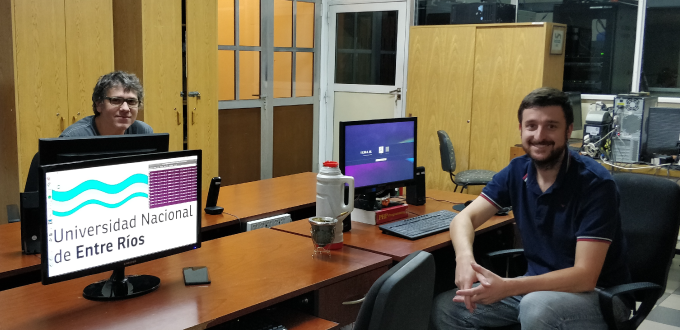The IPv6 Challenge Gave Us a Good Excuse to Deploy the Protocol
28/06/2018

With its project for deploying the IPv6 protocol from scratch, Argentina’s National University of Entre Ríos (UNER) won the third edition of the IPv6 Challenge organized by the LACNIC Technical Forum and LACNIC’s R&D department.
The IPv6 Challenge is a LACNIC initiative aimed at encouraging and promoting the use of the v6 protocol in Latin America and the Caribbean.
Joaquín Salvarredy, part of the winning team representing UNER University, noted that participating in the challenge had given them a good excuse to start deploying IPv6 from scratch among their clients, who quickly began to use IPv6.
What did the project you submitted to the IPv6 challenge involve?
Our project consisted of a deployment from scratch. When the challenge began, all we had was the address block assigned by LACNIC. We set ourselves small but achievable goals, which involved announcing our network via BGP and having the main site on IPv6, both of which we quickly achieved. This encouraged us to continue with the deployment, so we enabled a dozen client networks. We were surprised to see that more than 50% of the traffic was already over IPv6.
What prompted you to participate in this challenge?
The challenge turned out to be a good excuse to start our deployment, as we knew that sooner or later we would have to adopt IPv6. We had participated in IPv6 training activities and courses offered by LACNIC, and this motivated us to start our implementation, but we had never gone beyond a lab test. We wanted to start a deployment that would last over time.
Was it difficult to promote IPv6 within your organization?
Due to a lack of knowledge of the subject in general, the organization’s agenda had not considered IPv6 deployment, so this initiative was driven by our small department (there are only two of us: Germán Fochesatto and myself). We believed it was time to begin the deployment and we did it in a way that didn’t affect our services or our users, who didn’t notice any changes as our work was completely transparent to them.
How do you see IPv6 deployment in your country and region?
There is very little IPv6 deployment in our region. Our institution is located in an Argentine province (Entre Ríos) that is lagging behind in terms of connectivity. As for our country, we surveyed other national universities and observed that only 4 or 5 out of 55 have IPv6-ready websites, and they are not exactly the largest.
Do you think operators and organizations are aware of the speed with which IPv6 is being deployed in the region?
No. In fact, when the time came for the challenge, this was a problem we had to face. Our provider is one of the largest operators in Argentina, and although we’ve already had conversations asking them to provide us with native IPv6 support, we are still using tunneling for IPv6.
While we believe IPv6 deployment requires significant efforts and investment, operators in the region could use IPv6 as a competitive advantage.
(Free access, no subscription required)